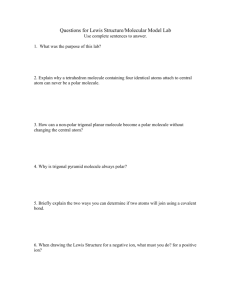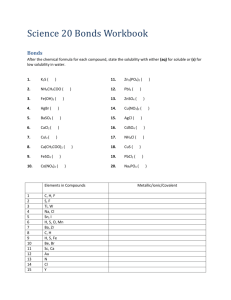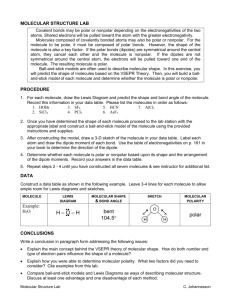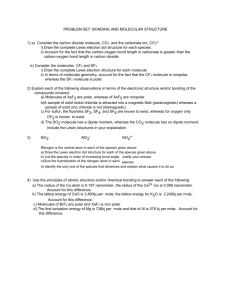Molecular Structure Lab
advertisement
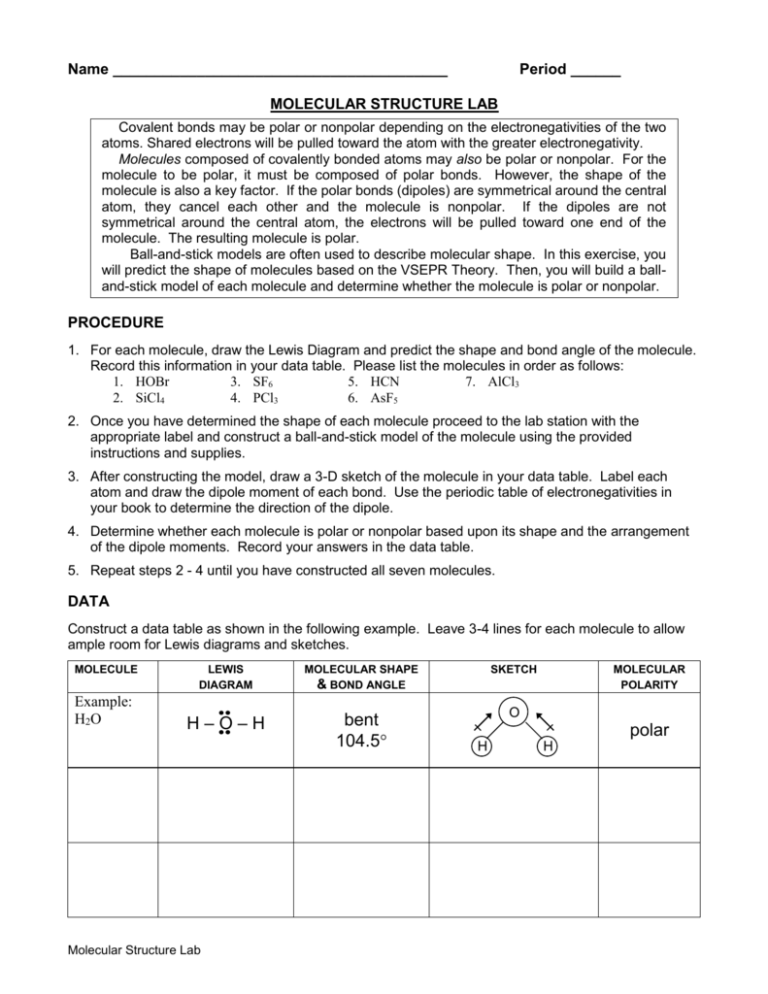
Name ________________________________________ Period ______ MOLECULAR STRUCTURE LAB Covalent bonds may be polar or nonpolar depending on the electronegativities of the two atoms. Shared electrons will be pulled toward the atom with the greater electronegativity. Molecules composed of covalently bonded atoms may also be polar or nonpolar. For the molecule to be polar, it must be composed of polar bonds. However, the shape of the molecule is also a key factor. If the polar bonds (dipoles) are symmetrical around the central atom, they cancel each other and the molecule is nonpolar. If the dipoles are not symmetrical around the central atom, the electrons will be pulled toward one end of the molecule. The resulting molecule is polar. Ball-and-stick models are often used to describe molecular shape. In this exercise, you will predict the shape of molecules based on the VSEPR Theory. Then, you will build a balland-stick model of each molecule and determine whether the molecule is polar or nonpolar. PROCEDURE 1. For each molecule, draw the Lewis Diagram and predict the shape and bond angle of the molecule. Record this information in your data table. Please list the molecules in order as follows: 1. HOBr 3. SF6 5. HCN 7. AlCl3 2. SiCl4 4. PCl3 6. AsF5 2. Once you have determined the shape of each molecule proceed to the lab station with the appropriate label and construct a ball-and-stick model of the molecule using the provided instructions and supplies. 3. After constructing the model, draw a 3-D sketch of the molecule in your data table. Label each atom and draw the dipole moment of each bond. Use the periodic table of electronegativities in your book to determine the direction of the dipole. 4. Determine whether each molecule is polar or nonpolar based upon its shape and the arrangement of the dipole moments. Record your answers in the data table. 5. Repeat steps 2 - 4 until you have constructed all seven molecules. DATA Construct a data table as shown in the following example. Leave 3-4 lines for each molecule to allow ample room for Lewis diagrams and sketches. MOLECULE Example: H2 O LEWIS DIAGRAM MOLECULAR SHAPE & BOND ANGLE H–O–H bent 104.5 Molecular Structure Lab SKETCH MOLECULAR POLARITY O polar H H MOLECULE LEWIS DIAGRAM MOLECULAR SHAPE & BOND ANGLE SKETCH MOLECULAR POLARITY CONCLUSIONS Write a conclusion in paragraph form addressing the following issues: Explain the main concept behind the VSEPR theory of molecular shape. How do both number and type of electron pairs influence the shape of a molecule? Explain how you were able to determine molecular polarity. What factor did you need to consider? Cite examples from this lab. Compare ball-and-stick models and Lewis Diagrams as ways of describing molecular structure. Discuss at least one advantage and one disadvantage of each method.

